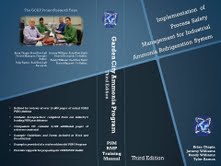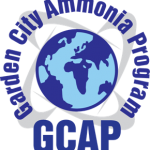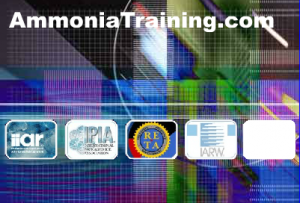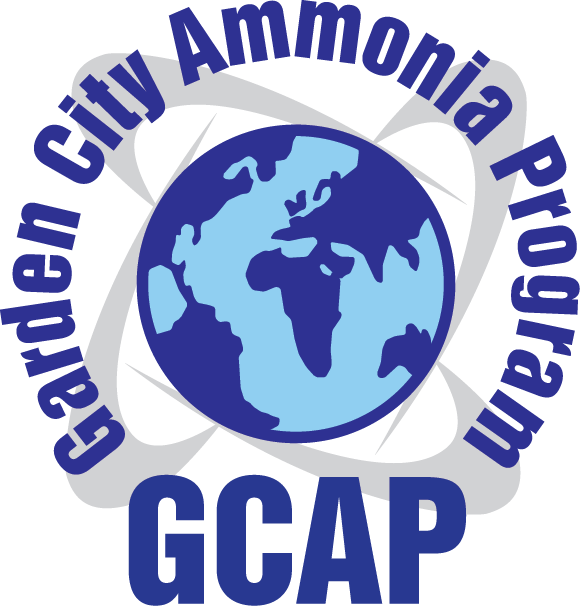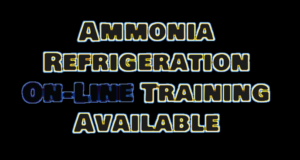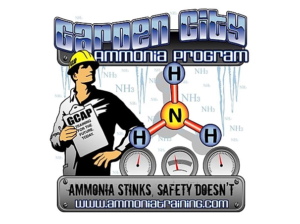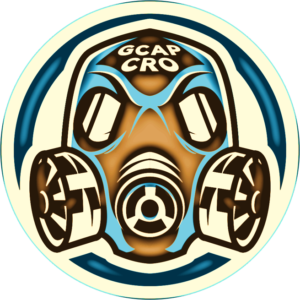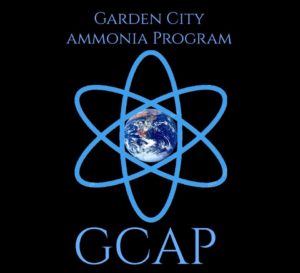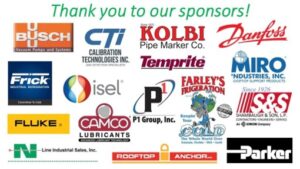News
Not a Good Day
by Jeremy Williams on Sep.27, 2013, under News
Hope nobody got hurt!
[youtube]http://www.youtube.com/watch?v=v6dG4kaMqRw[/youtube]
www.ChemNEP.com
by Jeremy Williams on Sep.09, 2013, under News
GARDEN CITY AMMONIA PROGRAM
is proud to announce their newest website dedicated to their Process Safety Division.
www.ChemNEP.com
PSM / RMP: Process Safety Management / Risk Magement Programs
Garden City Ammonia Program brings you the latest news site for Industrial Ammonia Refrigeration Systems facing CHEM NEP or Chemical National Emphasis Program issued by OSHA. GCAP has hands on trainig labs for Ammonia Refrigeration, CO2 Refrigeration, and Steam Boilers. Randy Williams and GCAP CoolCast Team bring you CHEMNEP
For more information give us a call. 620.271.0037
PSM/RMP Training and Compliance Services
Palmer Interpretation Letter
by Jeremy Williams on Aug.30, 2013, under News
Hydrostatic Trapping?
OSHA and the IIAR have not seen eye to eye on the issue of Hydrostatic trapping since 2006 when OSHA issued the Palmer interpretation letter which said the following:
If a liquid expansion hazard exists and the only safeguard to protect against this hazard is the use of trained operators/technicians, then OSHA would not consider this hazard to be adequately controlled, as required by 1910.119(e). After addressing the liquid expansion hazard in the PHA, the employer must address and resolve any of the PHA team’s findings and recommendations [1910.119(e)(5)]. Employers could abate this hazard and address and resolve the PHA finding/recommendation by installing the hydrostatic relief device(s) required by ANSI/IIAR 2 — 1999, Section 7.3.4(a)
Thankfully the IIAR was adamant in their resolve which resulted in the following letter: OSHA agrees that this revised language addresses the concems expressed in our response to question 10 in Palmer by clarifying that engineering controls, e.g., hydrostatic relief devices or expansion compens ation devices must be used when liquid filled equipment or piping can be automaticolly isolated under either nonnal or abnormal operating conditions. We also agree that
“trained technicians” acting in accordance with the requirements of 29 CFR 1910.147 (lockout/tagout) can safely perform manual isolation of potentially liquid filled equipment and piping. e.g .. to prepare equipment or piping for maintenance…
OSHA intends to revise Palmer by striking all or part of the reply to question 10 and adding either an explanatory note or footnote referencing the revised language in ANSI/IIAR 2-2008
You can read the letter here: http://issuu.com/iiarcondenser/docs/osha_hydrostatic?e=8262184/4645894
Executive Order — Improving Chemical Facility Safety and Security
by Jeremy Williams on Aug.02, 2013, under News
Executive Order — Improving Chemical Facility Safety and Security
IMPROVING CHEMICAL FACILITY SAFETY AND SECURITY
By the authority vested in me as President by the Constitution and the laws of the United States of America, it is hereby ordered as follows:
Section 1. Purpose. Chemicals, and the facilities where they are manufactured, stored, distributed, and used, are essential to today’s economy. Past and recent tragedies have reminded us, however, that the handling and storage of chemicals are not without risk. The Federal Government has developed and implemented numerous programs aimed at reducing the safety risks and security risks associated with hazardous chemicals. However, additional measures can be taken by executive departments and agencies (agencies) with regulatory authority to further improve chemical facility safety and security in coordination with owners and operators.
Sec. 2. Establishment of the Chemical Facility Safety and Security Working Group. (a) There is established a Chemical Facility Safety and Security Working Group (Working Group) co-chaired by the Secretary of Homeland Security, the Administrator of the Environmental Protection Agency (EPA), and the Secretary of Labor or their designated representatives at the Assistant Secretary level or higher. In addition, the Working Group shall consist of the head of each of the following agencies or their designated representatives at the Assistant Secretary level or higher:
(i) the Department of Justice;
(ii) the Department of Agriculture; and
(iii) the Department of Transportation.
(b) In carrying out its responsibilities under this order, the Working Group shall consult with representatives from:
(i) the Council on Environmental Quality;
(ii) the National Security Staff;
(iii) the Domestic Policy Council;
(iv) the Office of Science and Technology Policy;
(v) the Office of Management and Budget (OMB);
(vi) the White House Office of Cabinet Affairs; and
(vii) such other agencies and offices as the President may designate.
(c) The Working Group shall meet no less than quarterly to discuss the status of efforts to implement this order. The Working Group is encouraged to invite other affected agencies, such as the Nuclear Regulatory Commission, to attend these meetings as appropriate. Additionally, the Working Group shall provide, within 270 days of the date of this order, a status report to the President through the Chair of the Council on Environmental Quality and the Assistant to the President for Homeland Security and Counterterrorism.
Sec. 3. Improving Operational Coordination with State, Local, and Tribal Partners. (a) Within 135 days of the date of this order, the Working Group shall develop a plan to support and further enable efforts by State regulators, State, local, and tribal emergency responders, chemical facility owners and operators, and local and tribal communities to work together to improve chemical facility safety and security. In developing this plan, the Working Group shall:
(i) identify ways to improve coordination among the Federal Government, first responders, and State, local, and tribal entities;
(ii) take into account the capabilities, limitations, and needs of the first responder community;
(iii) identify ways to ensure that State homeland security advisors, State Emergency Response Commissions (SERCs), Tribal Emergency Response Commissions (TERCs), Local Emergency Planning Committees (LEPCs), Tribal Emergency Planning Committees (TEPCs), State regulators, and first responders have ready access to key information in a useable format, including by thoroughly reviewing categories of chemicals for which information is provided to first responders and the manner in which it is made available, so as to prevent, prepare for, and respond to chemical incidents;
(iv) identify areas, in collaboration with State, local, and tribal governments and private sector partners, where joint collaborative programs can be developed or enhanced, including by better integrating existing authorities, jurisdictional responsibilities, and regulatory programs in order to achieve a more comprehensive engagement on chemical risk management;
(v) identify opportunities and mechanisms to improve response procedures and to enhance information sharing and collaborative planning between chemical facility owners and operators, TEPCs, LEPCs, and first responders;
(vi) working with the National Response Team (NRT) and Regional Response Teams (RRTs), identify means for Federal technical assistance to support developing, implementing, exercising, and revising State, local, and tribal emergency contingency plans, including improved training; and
(vii) examine opportunities to improve public access to information about chemical facility risks consistent with national security needs and appropriate protection of confidential business information.
(b) Within 90 days of the date of this order, the Attorney General, through the head of the Bureau of Alcohol, Tobacco, Firearms and Explosives (ATF), shall assess the feasibility of sharing data related to the storage of explosive materials with SERCs, TEPCs, and LEPCs.
(c) Within 90 days of the date of this order, the Secretary of Homeland Security shall assess the feasibility of sharing Chemical Facility Anti-Terrorism Standards (CFATS) data with SERCs, TEPCs, and LEPCs on a categorical basis.
Sec. 4. Enhanced Federal Coordination. In order to enhance Federal coordination regarding chemical facility safety and security:
(a) Within 45 days of the date of this order, the Working Group shall deploy a pilot program, involving the EPA, Department of Labor, Department of Homeland Security, and any other appropriate agency, to validate best practices and to test innovative methods for Federal interagency collaboration regarding chemical facility safety and security. The pilot program shall operate in at least one region and shall integrate regional Federal, State, local, and tribal assets, where appropriate. The pilot program shall include innovative and effective methods of collecting, storing, and using facility information, stakeholder outreach, inspection planning, and, as appropriate, joint inspection efforts. The Working Group shall take into account the results of the pilot program in developing integrated standard operating procedures pursuant to subsection (b) of this section.
(b) Within 270 days of the date of this order, the Working Group shall create comprehensive and integrated standard operating procedures for a unified Federal approach for identifying and responding to risks in chemical facilities (including during pre-inspection, inspection execution, post-inspection, and post-accident investigation activities), incident reporting and response procedures, enforcement, and collection, storage, and use of facility information. This effort shall reflect best practices and shall include agency-to-agency referrals and joint inspection procedures where possible and appropriate, as well as consultation with the Federal Emergency Management Agency on post-accident response activities.
(c) Within 90 days of the date of this order, the Working Group shall consult with the Chemical Safety Board (CSB) and determine what, if any, changes are required to existing memorandums of understanding (MOUs) and processes between EPA and CSB, ATF and CSB, and the Occupational Safety and Health Administration and CSB for timely and full disclosure of information. To the extent appropriate, the Working Group may develop a single model MOU with CSB in lieu of existing agreements.
Sec. 5. Enhanced Information Collection and Sharing. In order to enhance information collection by and sharing across agencies to support more informed decisionmaking, streamline reporting requirements, and reduce duplicative efforts:
(a) Within 90 days of the date of this order, the Working Group shall develop an analysis, including recommendations, on the potential to improve information collection by and sharing between agencies to help identify chemical facilities which may not have provided all required information or may be non-compliant with Federal requirements to ensure chemical facility safety. This analysis should consider ongoing data-sharing efforts, other federally collected information, and chemical facility reporting among agencies (including information shared with State, local, and tribal governments).
(b) Within 180 days of the date of this order, the Working Group shall produce a proposal for a coordinated, flexible data-sharing process which can be utilized to track data submitted to agencies for federally regulated chemical facilities, including locations, chemicals, regulated entities, previous infractions, and other relevant information. The proposal shall allow for the sharing of information with and by State, local, and tribal entities where possible, consistent with section 3 of this order, and shall address computer-based and non-computer-based means for improving the process in the short-term, if they exist.
(c) Within 180 days of the date of this order, the Working Group shall identify and recommend possible changes to streamline and otherwise improve data collection to meet the needs of the public and Federal, State, local, and tribal agencies (including those charged with protecting workers and the public), consistent with the Paperwork Reduction Act and other relevant authorities, including opportunities to lessen the reporting burden on regulated industries. To the extent feasible, efforts shall minimize the duplicative collection of information while ensuring that pertinent information is shared with all key entities.
Sec. 6. Policy, Regulation, and Standards Modernization. (a) In order to enhance safety and security in chemical facilities by modernizing key policies, regulations, and standards, the Working Group shall:
(i) within 90 days of the date of this order, develop options for improved chemical facility safety and security that identifies improvements to existing risk management practices through agency programs,
(ii) within 90 days of developing the options described in subsection (a)(i) of this section, engage key stakeholders to discuss the options and other means to improve chemical risk management that may be available; and
(iii) within 90 days of completing the outreach and consultation effort described in subsection (a)(ii) of this section, develop a plan for implementing practical and effective improvements to chemical risk management identified pursuant to subsections (a)(i) and (ii) of this section.
(b) Within 90 days of the date of this order, the Secretary of Homeland Security, the Secretary of Labor, and the Secretary of Agriculture shall develop a list of potential regulatory and legislative proposals to improve the safe and secure storage, handling, and sale of ammonium nitrate and identify ways in which ammonium nitrate safety and security can be enhanced under existing authorities.
(c) Within 90 days of the date of this order, the Administrator of EPA and the Secretary of Labor shall review the chemical hazards covered by the Risk Management Program (RMP) and the Process Safety Management Standard (PSM) and determine if the RMP or PSM can and should be expanded to address additional regulated substances and types of hazards. In addition, the EPA and the Department of Labor shall develop a plan, including a timeline and resource requirements, to expand, implement, and enforce the RMP and PSM in a manner that addresses the additional regulated substances and types of hazards.
(d) Within 90 days of the date of this order, the Secretary of Homeland Security shall identify a list of chemicals, including poisons and reactive substances, that should be considered for addition to the CFATS Chemicals of Interest list.
(e) Within 90 days of the date of this order, the Secretary of Labor shall:
(i) identify any changes that need to be made in the retail and commercial grade exemptions in the PSM Standard; and
(ii) issue a Request for Information designed to identify issues related to modernization of the PSM Standard and related standards necessary to meet the goal of preventing major chemical accidents.
Sec. 7. Identification of Best Practices. The Working Group shall convene stakeholders, including chemical producers, chemical storage companies, agricultural supply companies, State and local regulators, chemical critical infrastructure owners and operators, first responders, labor organizations representing affected workers, environmental and community groups, and consensus standards organizations, in order to identify and share successes to date and best practices to reduce safety risks and security risks in the production and storage of potentially harmful chemicals, including through the use of safer alternatives, adoption of best practices, and potential public-private partnerships.
Sec. 8. General Provisions. (a) This order shall be implemented consistent with applicable law, including international trade obligations, and subject to the availability of appropriations.
(b) Nothing in this order shall be construed to impair or otherwise affect:
(i) the authority granted by law to a department, agency, or the head thereof; or
(ii) the functions of the Director of OMB relating to budgetary, administrative, or legislative proposals.
(c) This order is not intended to, and does not, create any right or benefit, substantive or procedural, enforceable at law or in equity by any party against the United States, its departments, agencies, or entities, its officers, employees, or agents, or any other person.
BARACK OBAMA
THE WHITE HOUSE,
August 1, 2013.
Chemical Safety Board’s Response
Implementing Process Safety Management for Ammonia Refrigeration
by Jeremy Williams on Jun.15, 2013, under News
Too often in the Ammonia refrigeration industry the people tasked with creating and maintaining the Process Safety Management systems that cover our refrigeration systems are simply shown a collection of binders and told “Good Luck.” Most PSM practitioners we know have suffered this fate at least once in their careers and were nearly overwhelmed trying to make sense of reams of paperwork with little training and even fewer resources. GCAP set out to create this book as a guide that could be used as a basis of understanding for each new person “tossed to the wolves” in the PSM realm.
“Implementing Process Safety Management for Ammonia Refrigeration” was written for the exclusive use of Garden City Ammonia Program as a textbook for their Process Safety Management class and to outline a standard of educational material, guidelines, and best practices for the Ammonia industry. Throughout the years we’ve all met hundreds of PSM practitioners and every one left at least one good idea with each of us; In some sense, the text presented here represents the collected wisdom of those hundreds of PSM practitioners operating thousands of facilities. Our focus is on real-world implementation; with due deference given to the practical needs of the facility, the requirements under the regulations and the challenges we face in an increasingly fast-paced and competitive business world.
Most of the PSM implementations in our industry rely on the IIAR’s Process Safety Management Guidelines for Ammonia Refrigeration and its companion Risk Management Program Guidelines for Ammonia Refrigeration. While we believe these books provided an excellent resource for their time, PSM implementation has continued to evolve rapidly in the years since they were published and they no longer reflect the “state of the art”. This book is an attempt to re-envision Process Safety Management implementation based on the experiences of the Ammonia refrigeration industry over the past 15+ years.
OSHA’s NEP or National Emphasis Program (and the fines that came with it) has served to highlight the deficiencies in the way Process Safety Management for Ammonia refrigeration is currently implemented. The NEP draws from PSM experience in the chemical process and petroleum refinery sectors, so we have adopted some of the ideas and approaches present in the excellent Center for Chemical Process Safety (CCPS) books to improve the system first presented by the IIAR considerably. We believe that the IIAR is still the appropriate source for information regarding the proper design, installation, maintenance, and operation of mechanical Ammonia refrigeration systems; however we turn to the CCPS and other organizations for guidance on how the Process Safety Management programs that cover these systems should be designed and implemented.
We at GCAP thank you for investing your time in our Process Safety Management course. When you attend a GCAP course you are joining a family of over 10,000 Ammonia professionals throughout the world. Please always think of the GCAP team as a resource at your disposal when you have questions about PSM implementation or any Ammonia refrigeration topic.
Your ability to effectively coordinate, your dedication, your talents and your hard work will be the deciding factors in your PSM implementation. Process Safety Management is a “Team Sport” and while many teams have star players, everyone’s contribution is invaluable if the team is to reach their goals. The oft-repeated line “A bad system will beat a good employee every time” is absolutely true when it comes to PSM implementation so remember that the Process Safety Management system you implement in your facility must reflect both the unique needs of that facility and its personnel.
Training Dates
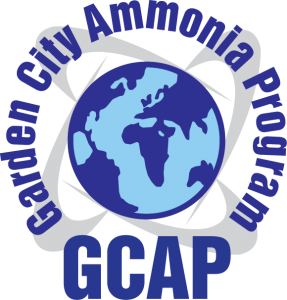 www.AmmoniaTraining.com
www.AmmoniaTraining.com
620-271-0037
ammonia@pld.com
CO2 Refrigeration Training Website
by Jeremy Williams on May.01, 2013, under News
GCAP is proud to announce their newest website for industrial refrigeration training for operators
CO2 / Carbon Dioxide / R744 / Transcritical / Cascade / Brine / Compression
www.CO2Training.com
Randy Williams and GCAP CoolCast team provides education for ammonia refrigeration / carbon dioxide refrigeration / steam boilers / and PSM/RMP Compliance. Our spectrum of training is customized toward the quick start with no experience to the seasoned technician.
A Well trained operator should know how to maintain and operator the plants equipment in the most efficient manner while keeping safety in mind. Demonstrating competence and knowledge as well as best engineering practices. GCAP supplies training for over 600 different companies throughout the world. We believe keeping up the industries technology is the key to our success when when we promote GCAP’s hand on training labs.
Mission Statement: Enhance the technology, efficiency, safety, and educate the industrial technician through commitment.
[youtube]http://www.youtube.com/watch?v=kR7GTVDLBC0[/youtube]
Anhydrous Ammonia Tank Release: Worst Case Scenario
by Jeremy Williams on Apr.05, 2013, under News
An anhydrous ammonia tank hose broke and sprayed all over a field in Faribault, MN. Approximately 1000 Gallon Nurse Tank.
When someone tells you that ammonia vapor is lighter than air and will rise… this is true; however, when the release involves LIQUID AMMONIA or even in an aerosol state this is what Anhydrous Ammonia will act like when released
Anhydrous Ammonia Tank Leak
[youtube width=”480″ height=”320″]http://www.youtube.com/watch?v=fYRVQfdFHZ0[/youtube]
Kansas City 5th Annual Ammonia Safety Day
by Jeremy Williams on Feb.25, 2013, under News
Kansas City 5th Annual Ammonia Safety Day
@Kansas City Community College
Hosted by Garden City Ammonia Program
May 30, 2013
2013 Safety Day Agenda
$35.00 Per Person
$350.00 Per Vendor
Register Today
Never Proceed Through an Ammonia Cloud!
[youtube width=”480″ height=”320″]http://www.youtube.com/watch?v=zvDEVhR7u4U[/youtube]
GCAP’s 2013 Training Dates
by Jeremy Williams on Jan.07, 2013, under News
Garden City Ammonia Programs 2013 training dates are available.
GCAP’s 2013 Training Dates
If GCAP can help you out with any of your training needs please contact us. We wish you all a prosperous 2013.
Garden City Ammonia Program
620-271-0037
www.AmmoniaTraining.com
ammonia@pld.com
GCAP’s 2012 Industrial Training Dates
by Jeremy Williams on Feb.01, 2012, under News
Garden City Ammonia Program
Hands-on-Training Labs
Industrial Ammonia Refrigeration, Boiler, and Carbon Dioxide Training For Operators
PSM/RMP Compliance, Compliance Audits, and CHEMNEP
Our Mission Statement: Enhance the technology, efficiency, safety, and educate the industrial technician through commitment.
A well trained operator should know how to maintain and operate the plants equipment in the most efficient manner while keeping safety in mind. Demonstrating competence and knowledge as well as best engineering practices. We supply training for over 572 different companies through GCAP, 2405 East Fulton, Garden City, Kansas U.S. location. We have been at our new facility for over 9 years with the newest technology in the industry for training. We believe keeping up with our industry’s technology is the key to our success when we promote GCAP’s hands-on training labs.
GCAP’s Guarantee: If you feel that the training you received is not superior to any other refrigeration training programs in the country, then the course is FREE!. If one of your operators (student) does not feel they are ready to operate your system after completing our first course, they can return again.
President of GCAP LLC Randy Williams
Download Dates Here
Garden City Ammonia Program 2012 Training Dates
| Ammonia Safety Days
Kansas City 4th Annual Ammonia Safety Day Hosted by GCAP |
May 11, 2012: $35.00 | ||||||||||||||||||
| Ammonia Operator I
Part One Start here with your operator!
$1,285.00 at GCAP Facility
$1,385.00 On-Site |
|
||||||||||||||||||
| Ammonia Operator II
Part Two Continue here with your operators to become technicians! $1,285.00 at GCAP Facility $1,385.00 On-Site |
|
||||||||||||||||||
| Ammonia Operator I & II Combined 7 Day Course “Two years experience required” $2,200.00 |
|
||||||||||||||||||
| Ammonia Operator III
Part Three IIAR Library Standards and Bulletins Refresher Training $1,285.00 @ GCAP $1,385.00 On-Site |
|
||||||||||||||||||
| PSM/RMP OSHA 1910.119 and EPA 40.68 $1,485.00 @ GCAP $1,585.00 On-Site |
|
||||||||||||||||||
| National Emphasis Program
“CHEMNEP” OSHA’s New Inspection Process $1,585.00 @ GCAP $1,685.00 On-Site |
|
||||||||||||||||||
| Compliance Audit
For Ammonia Refrigeration PSM/RMP Programs Audit Includes: RMP Level 3, PQV, and NEP |
|
||||||||||||||||||
|
CO2 Training Course $1,485.00 @ GCAP |
|
||||||||||||||||||
|
Boiler Level I High and Low Pressure $1,285.00 @ GCAP $1,385.00 On-Site |
|
||||||||||||||||||
| Boiler Level II
High and Low Pressure MUST COMPLETE GCAP BOILER LEVEL I $1,285.00 |
|
||||||||||||||||||
Boiler Level III |
Dates Coming Soon! | ||||||||||||||||||
| On-Site Training
GCAP will teach a course at your facility or location right off of your plants specific equipment. Saves on travel expenses for your company. |
|
LINK to Registration Page
|
